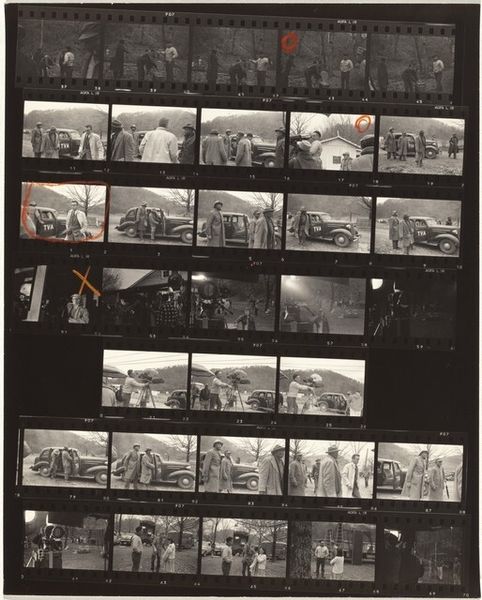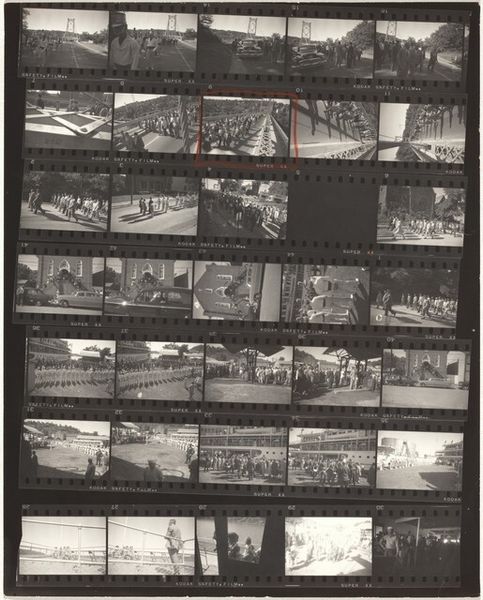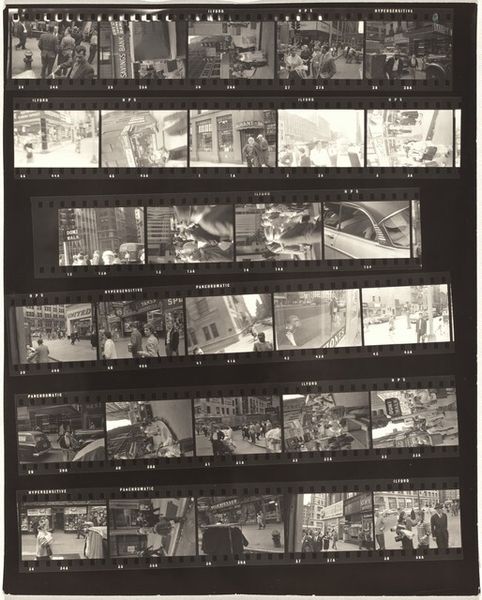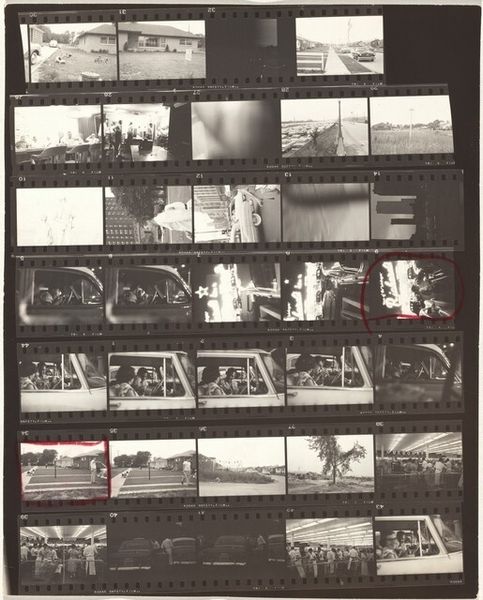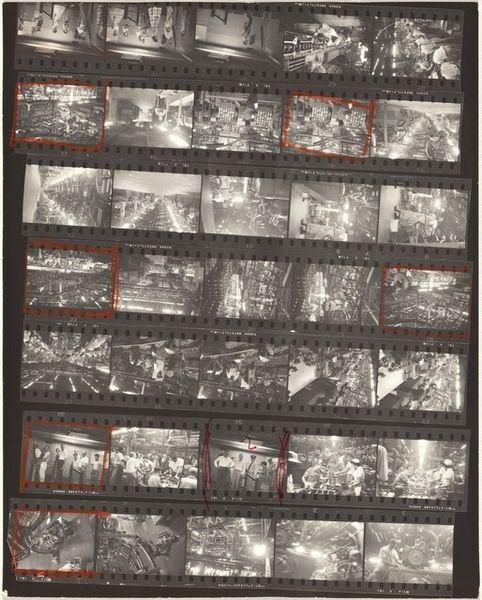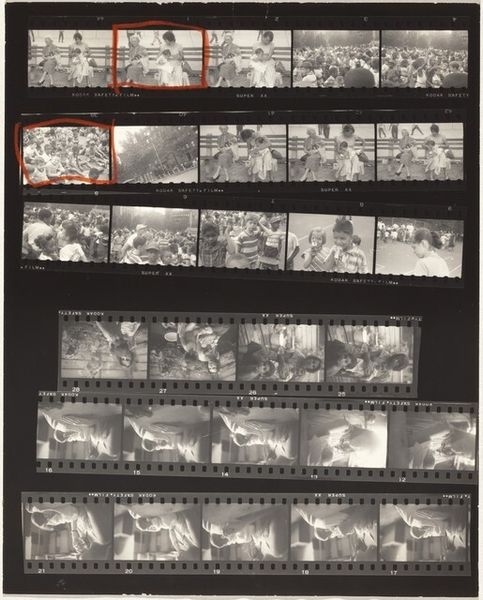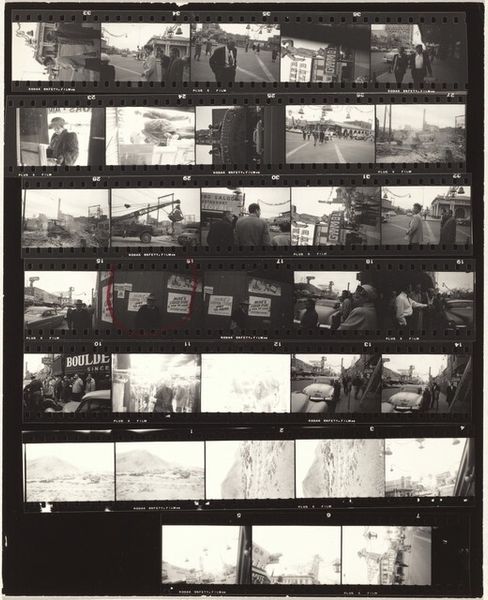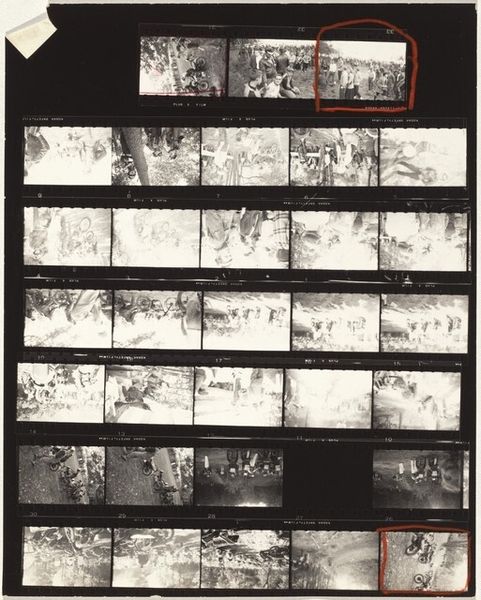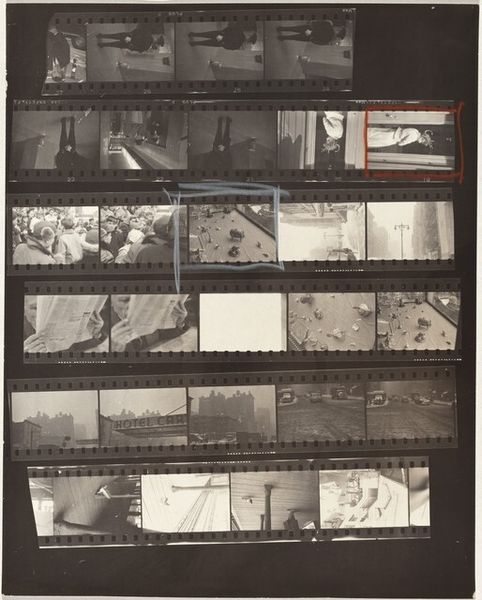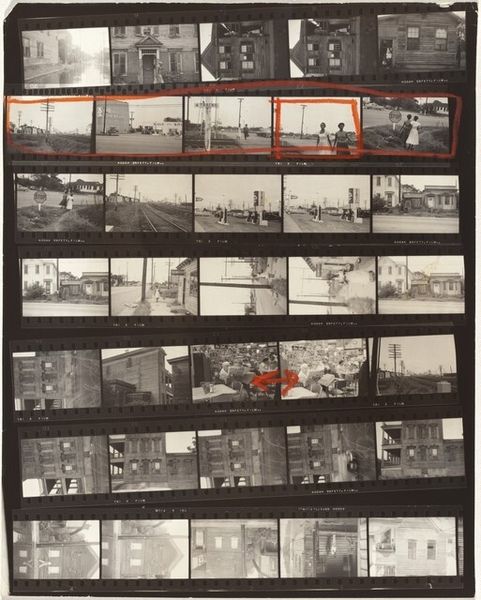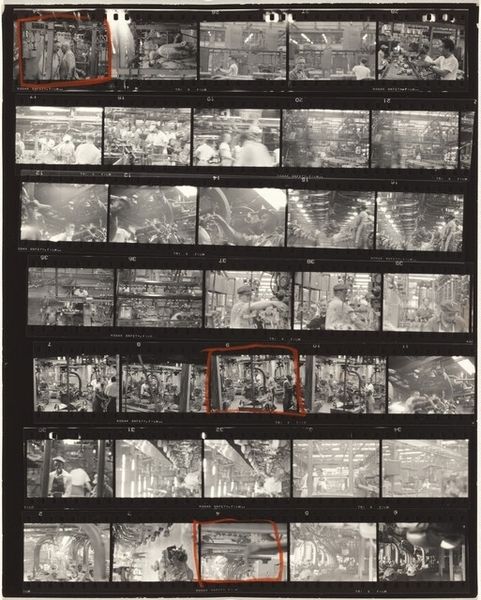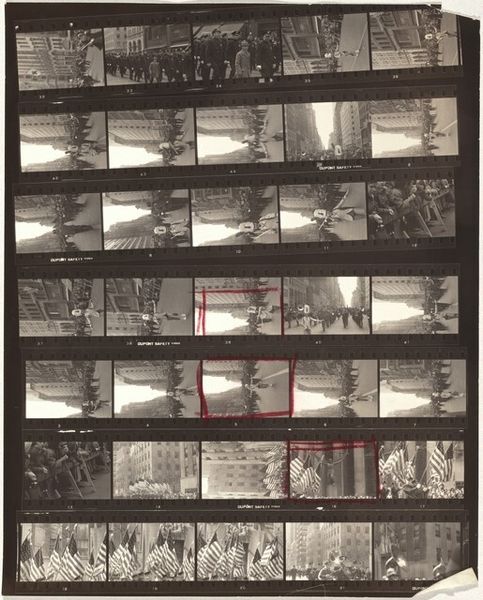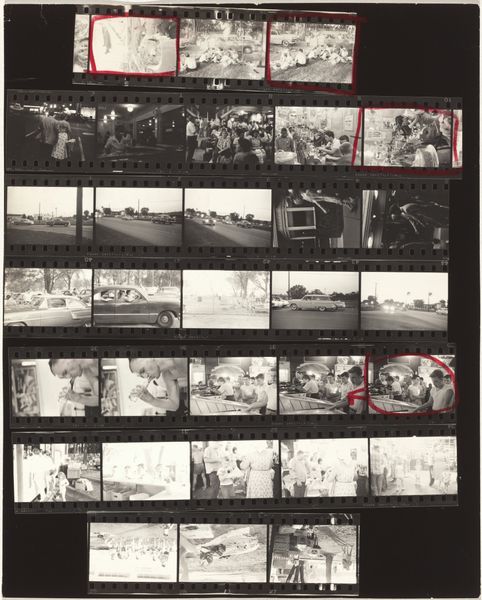
photography
#
dark colour hue
#
film photography
#
dark hue
#
street-photography
#
photography
#
modernism
Dimensions: sheet: 25.2 x 20.2 cm (9 15/16 x 7 15/16 in.)
Copyright: National Gallery of Art: CC0 1.0
Curator: Robert Frank's “7th Avenue--New York City no number” from the early 1950s is before us, a striking photographic contact sheet. My immediate sense is one of fragmented urban experience, like a disjointed narrative of postwar America captured through a grimy lens. Editor: Grimy indeed! Looking at this as an object, as a strip of film, a record of process, the ASFA L coding suggests certain production methods, right? It's material evidence of photographic labor – a roll of film exposed, developed, and proofed. The darkroom work is really part of the image’s story. Curator: Precisely, and within that materiality lies an intentional compositional strategy. Note the sequencing, the deliberate juxtapositions of these images. We get glimpses – a businessman, merchandise, cityscapes, consumer displays. It all amounts to more than just candid street scenes. It seems he wanted to showcase modern society with multiple angles. Editor: I find the graininess and contrast so interesting. How do you see these aesthetic choices as connecting to a particular historical moment of mass production, industrial design, and shifting modes of distribution and exhibition of art and photojournalism? The contact sheet is not just a functional tool, but also reflects artistic intent regarding the production of art, no? Curator: That’s very astute. He transforms the mundane into something disquieting, almost alienating, with these very direct and raw aesthetic techniques. The tonal range is very telling for us as viewers to decode these themes of alienation with social issues. Editor: And look at the labor involved, and materials needed, the photographer needed capital and time! This kind of material investigation can give us very powerful insights, revealing art production not just as an individual activity, but something with a big context and material basis. Curator: A crucial point. It underscores that photographic art is, intrinsically, about light and dark. A meditation on what we choose to illuminate and what we leave obscured. Editor: Absolutely, and by making the photographic process visible, as this image does, Frank encourages us to contemplate the materials and modes of photographic construction alongside any reading of this sheet and of the depicted social tableau, for both the labor to document but also the economic basis of what he is depicting. Curator: In short, the work encourages us to consider both Frank's methods, the labor implied with creating these images and our own processes of perceiving a layered composition, the social conditions of postwar America, and also what these individual photographic panels mean. Editor: Agreed; I feel I am a new view regarding materialism in an image through Frank’s piece, as I understand materiality is so prevalent for social themes within art in production and what it signifies.
Comments
No comments
Be the first to comment and join the conversation on the ultimate creative platform.
